Ecology
- Take more time eating breakfast
- Make it a point to go outside and get on your hands and knees. Find something tiny, something fragile.
- Observe the processes going on around us, especially those of the natural variety.
- Find nature even if you’re in an urban setting. Seek it out, preferably on foot.
- Plant a seed and make sure it grows. Best if it is something you can eat like a tomato.
- Be okay with being small.
- Think about your use of resources, especially fossil fuels. Reduce travel especially if it requires a plane or auto. Embrace trains and bicycles for travel.
- Reduce your use of resources. Then reduce it again. And again. Don’t stop.
- Increase your capacity to renew life around you. Start small. That tomato plant needs friends. Why not grow a pepper and some basil too?
- Take time to learn about the non-human species that inhabit your region.
- Mulch something. Mulch some of your grass lawn if you have a lawn. Grass lawns are a waste of resources. *Plant fruit trees or fruit bushes.
- Compost your organic waste. Don’t forget to dig into the pile every so often to check out the process.
- *Your tomatoes, peppers and basil are probably a little lonely. Plant some native wildflowers. There’s a bird or a butterfly just waiting to be fed by the flowers you plant.
- Remember, smaller homes require fewer resources to build, maintain, heat and cool.
- Share resources with your friends and neighbors.
I was out is the garden yesterday and heard a bird that I didn’t recognize. I opened up the Merlin ID app and got the name. Then I spent a few minutes listening. Heard it just now outside my window and smiled: Good morning White-eyed Vireo. I love learning about this amazing planet.
Cofounder of Greenpeace and writer of the Deep Green column Rex Weyler helps us transcend the idea that we can fix the environment – or anything else – so we can finally learn to participate as members of a living world.
An excellent discussion between Rex Weyler and Douglass Rushkoff on the current episode of the Team Human Podcast.
The current rate of extinctions compared to the geological norm is now several thousandfold faster, making this the sixth great mass extinction event in Earth’s history, and thus the start of the Anthropocene in its clearest demarcation, which is to say, we are in a biosphere catastrophe that will be obvious in the fossil record for as long as the Earth lasts.
It’s taken me far too long but I’m finally reading The Ministry for the Future by Kim Stanley Robinson. In the paragraph before the quote above, he provides a list of recently extinct species, from that list: Saudi gazelle
Livestock make up 62% of the world’s mammal biomass; humans account for 34%; and wild mammals are just 4%.
A diverse range of mammals once roamed the planet. This changed quickly and dramatically with the arrival of humans. Since then, wild land mammal biomass has declined by an estimated 85%.
Humans are now the dominant species.
We see this when we look at the distribution of mammals across the world today.
Wild mammals make up only a few percent of the world’s mammals - Our World in Data
From elephants to tigers, study reveals scale of damage to wildlife caused by transformation of wildernesses and human activity.
The total weight of Earth’s wild land mammals – from elephants to bisons and from deer to tigers – is now less than 10% of the combined tonnage of men, women and children living on the planet.
‘A wake-up call’: total weight of wild mammals less than 10% of humanity’s | The Guardian
“Almost two-thirds of sharks and rays that live around the world’s coral reefs are threatened with extinction with potentially dire knock-on effects for ecosystems.”
‘Extinction crisis’ of sharks and rays to have devastating effect on other species | The Guardian
“Volunteers hope to bring native wildlife back into abundance by reestablishing grasslands that were wiped out after European settlement of Missouri. "
“At its very essence, a lichen consists of a fungus coexisting symbiotically with algae or photosynthetic bacteria called cyanobacteria — and sometimes with both.”
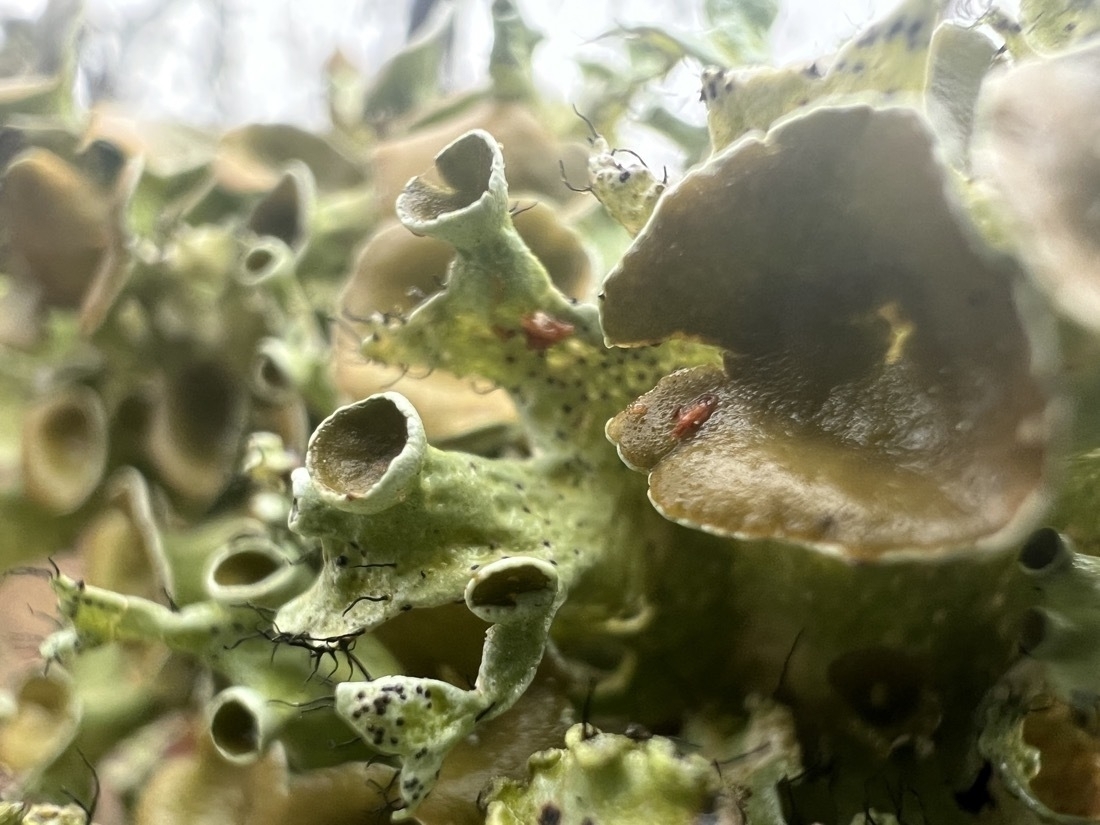
An interesting introduction to Lichen biodiversity!
“Environmental advocates say this is just the beginning to a cleanup that will likely take years.”
What you need to know about the latest Keystone pipeline oil spill : NPR
From the Guardian podcast: The Cop15 conference brings together representatives from all over the world with an urgent mission: preventing the breakdown of Earth’s natural habitats and mass extinction.
The age of extinction: can we prevent an ecological collapse? | The Guardian
A visually stunning documentation.
“The most diverse group of organisms on the planet are in trouble, with recent research suggesting insect populations are declining at an unprecedented rate.”
Bee bus stops first appeared in the Dutch city of Utrecht. Now the UK is planning for more than 1,000 and there is growing interest across Europe and in Canada and Australia
Buzz stops: bus shelter roofs turned into gardens for bees and butterflies | Bees | The Guardian
A fungal disease that attacks while bats are hibernating has brought the tricolored bat to the brink of extinction.
Fish and Wildlife Service recommends tricolored bats for endangered species list : NPR
Very sad news but not surprising. From habitat destruction to climate change to chemical agriculture, we’re wreaking havoc. Monarch butterflies are now listed as endangered

It seems fairly common amongst humans in modern societies that we seem to focus on our individual selves, we identify as singular human beings. Setting aside the importance of socialization and being a part of families, the human community, and the larger ecological community, it might also be worth mentioning that our individual human body is also not what it seems. Welcome to the human microbiome. Your body is human, bacteria, archaea, fungi, protists and viruses.
The human body is full of bacteria, and in fact is estimated to contain more bacterial cells than human cells.
Source: National Human Genome Research Institute:
Our bodies play host to a wide variety of microbes, called the human microbiota, that outnumber our own cells by about 10 to 1.
Source: Wide Variety of Bacteria Mapped Across the Human Body
In any human body there are around 30 trillion human cells, but our microbiome is an estimated 39 trillion microbial cells including bacteria, viruses and fungi that live on and in us.
Due to their small size, these organisms make up only about 1-3 per cent of our body mass, but this belies the microbiome’s tremendous power and potential.
We have around 20-25,000 genes in each of our cells, but the human microbiome potentially holds 500 times more.
Moreover, the ability of microbes to evolve quickly, swap genes, multiply and adapt to changing circumstances give them – and us, their hosts – remarkable abilities that we’re only now beginning to fathom.
Apple and the environment
If you’ve read this blog for long you may have picked up that I’m a bit of an Apple fan. But it’s also true that I have, since around 1990, I have oriented the way I live my life around the question, “Is this good for the health of the Earth?” Those that know me would probably agree with the suggestion that I’m a bit extreme in that regard. The way I look at it is that it is, fundamentally, a question lived ethics and survival. What we do everyday impacts not only our future survival but the survival of countless other species with which we share the planet. Our choices thus far have been leading us to the extinction of other species and quite possibly our own. Our time on this planet does have an expiration date. One day humans will no longer exist on this planet. That’s a given. But will we end our time here prematurely due to poor behavior? Increasingly it looks as though we will.
I have long argued (as many have) that capitalism is incompatible with the longterm health of the planet. As an economic system it is focused on profit and specifically short-term profit. Corporations have demonstrated time and time again that they don’t do well when it concerns the environment and questions of human social justice. In the past ten years Apple has begun to demonstrate that it is possible continue making a profit even as it undergoes a dramatic shift in it’s social and environmental impact from a negative to a positive. Apple isn’t just minimizing its negative impact but is attempting and succeeding at creating a significant positive impact.
In recent years as it makes these changes it has made an effort to communicate to the public what it is doing. On the face of it it’s pretty easy to dismiss as the usual greenwashing that many companies engage in when they care about that aspect of how they appear to the public. In other words, marketing. But here’s the thing, Apple has gone so far in changing the way it operates that it no longer appears to be trying to convince the public that it is a good corporate “citizen”. They have seemingly made it a part of their mission to set the bar of conduct at a new level. This is a sustained effort to shift the fundamentals of the company from one that prioritizes profit to one which puts environmental impact on an equal footing.
In the lead-up to Earth Day 2017 we’ve seen a push by Apple to share what it’s been doing in these areas. In past years they have done the same but with each passing year as the scope of their commitment deepens it seems to be a shift from corporate marketing to one in which Apple sees a “teachable moment” and is educating the public not for it’s own benefit but for the public good. They are setting an example not just for corporations but even for citizens and governments. They aren’t just meeting the too-low requirements and goals set out by governments. They are exceeding them and raising the bar and not just by a little. And then they are saying to the world, do better. Do much better.
A day or so ago John Gruber of Daring Fireball and The Talk Show published an interview with Lisa Jackson, Apple’s VP of Environmental Policy. I remember when Lisa Jackson moved over to Apple having served 4 years as head of the EPA under Obama. At the time I just figured, oh, the usual high-level corporate/government revolving door. I didn’t pay much attention to her. But listening to that interview I can only say that I am really impressed. She’s a fantastic asset to Apple as well as an excellent STEM role model who also addresses the connection between STEM and our social and ecological problems and needs. I’ve listened to it twice and might give it a third go. She offers some fascinating details about how Apple operates in relation to resources.
As an activist who protested Nike in the late 90s for it’s overseas labor policies I was keenly aware that Apple was having it’s own labor issues in the early 2000s (and probably before). I began paying attention then to both the labor and environmental practices of my favorite technology company with some hope that they would “Think Different” in their dealings with the world around them. They have not disappointed. While progress was made when Jobs was at the helm their move towards greater social and environmental responsibility really increased when Tim Cook took over. The focus on the social and environmental responsibility has intensified greatly over the past 5 years. This interview is an excellent summary of those changes. But what is truly breathtaking is the scope and depth to which they have gone.
It’s easy these days to become mired in a mix of hopelessness, despair, frustration and disgust. Our political system seems equal parts corrupt, inept, and circus. On the issue of climate change the U.S. has proven largely ineffectual and confused. From the public to government to business, we’ve made little progress at far too slow a rate. It seems very likely that we are past the point of no return and that all there is to do now is adapt and attempt to minimize what now seems to be inevitable. But I listen to this interview and not only am I inspired but I’m embarrassed that it is a company… a capitalist enterprise that is actually leading the way, that is setting the best possible example not only for other companies but for citizens. As someone who has long considered himself an activist (of sorts) I suddenly feel a bit ashamed of my despair. That might not be exactly it or quite the best way to put it but it’s close.
Also, Apple has put together four videos for Earth Day 2017. Good stuff.
And yet another bit of Apple and the environment bit of news, Macworld reports that Apple will return heat generated by data center to warm up homes:
Apple is building a new data center in Denmark, and it has some interesting ideas on how to power the data center with renewable energy, while also giving back to the community.Excess heat generated by the data center will be captured and returned to the local district’s heating system, which will warm up homes in the community.
This is just one example of many that illustrates the scope of commitment that Apple is making to this effort. This is exactly the sort of project that Lisa Jackson is describing in the above linked interview with John Gruber.
Last but not least, Apple is set to move into it’s new headquarters, Apple Park. Much work is still being done but April was to be the month that employees started moving over. To say that I’m impressed with Apple Park would be a huge understatement. From native and edible landscaping to the heating and cooling to the local energy production, it is, by all accounts, the standard for large scale green architecture and landscaping.
Precarious
As is my usual routine I took my dog Cosmo out for our walk to the mailbox yesterday. Along the way I had a thought about the precariousness of our existence on Earth. We live in this sort of illusion as our daily life is wrapped in an assumption of stability. For the most part our human brains encounter the same environment everyday. Most of us wake up in the morning and are active during the day. The light from our sun scatters in our atmosphere, heating and lighting and otherwise presenting a world around us that seems stable. Somedays are cloudy, others sunny, often a mix of the two. As we go about our days we see a mix of human and non-human species, natural and human environments. We eat and breath, work, play, and talk.
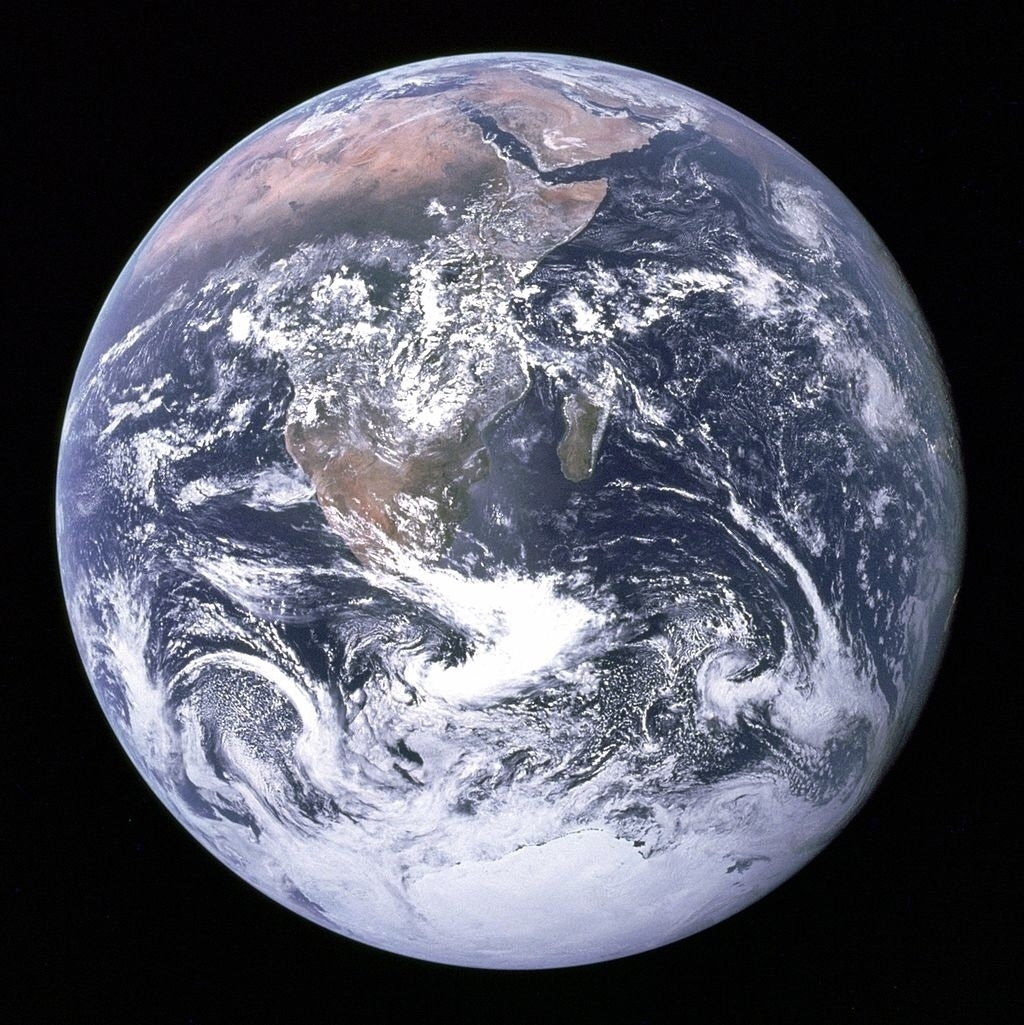
But our life on this planet exists on the thinnest of onion skins. The biosphere of our planet, the zone in which all life happens is remarkably thin. While the actual thickness of the biosphere is not easily measured it generally falls within a range of 6.5 miles. At the highest we have birds flying as high as 1.1 mile and at the depth we have fish 5.2 miles below the water. There are examples of higher flying birds and deeper dwelling organisms but they are exceptions to the general. The diameter of the earth is 7,918 miles. The radius is 3,959 miles. Almost all life on our planet lives on the outer 6.5 miles of that.
As an amateur astronomer I’ve spent a good bit of time viewing and contemplating space and distance. For all of the beauty of the stars in the night sky, space is mostly empty. The space between stars is vast. The space between galaxies even more so. If we just turn our attention to our own solar system and what exists here well, again, it’s mostly empty space. Our Sun makes up 99.86% of the matter in our solar system. Our Earth, though it is the densest planet in the solar system, is only the tiniest proportion of the mass of our solar system. It barely registers. On the scale of our solar system our Earth is merely a tiny point separated from the sun and other planets by vast distances. To get a sense of it watch this amazing video by Wylie Overstreet in which three guys drove out to the desert of Nevada with a to-scale model to demonstrate the spacing of our solar system.
Our lived experience, our world, is just a precarious, thin layer on what amounts to a very tiny planet. On a clear, dark night I can lookup and see several thousand stars with my naked eyes. In remote locations such as mine there is little light pollution and the atmosphere disappears. It is in this star-lit darkness that I can begin to experience the Earth as a space ship of sorts. It really is a living space ship. In our orbit around the sun we move through space at 67,000 miles per hour. But remember, our solar system is also moving around the center of the Milky Way galaxy at 490,000 miles per hour. Of course we don’t see it or feel it directly but it is happening nonetheless.
Life on Earth is precarious. It’s stability is not permanent. Our sense of day-to-day continuity is something we’re used to and something we assume will continue. I’d suggest that if more people had a better sense of how it all works, had a better sense of just how thin the envelope of safety is, perhaps they might be more inclined to take seriously the warning of science regarding climate change, habitat loss and other aspects of biosphere stability. It’s too late to stop much of what we’ve set in motion but if we don’t make real change very soon we will experience the worst case scenarios.
Big on Small
I’m big on small and have been for much of my adult life. Not just small but tiny if at all possible. What might it mean to be small?
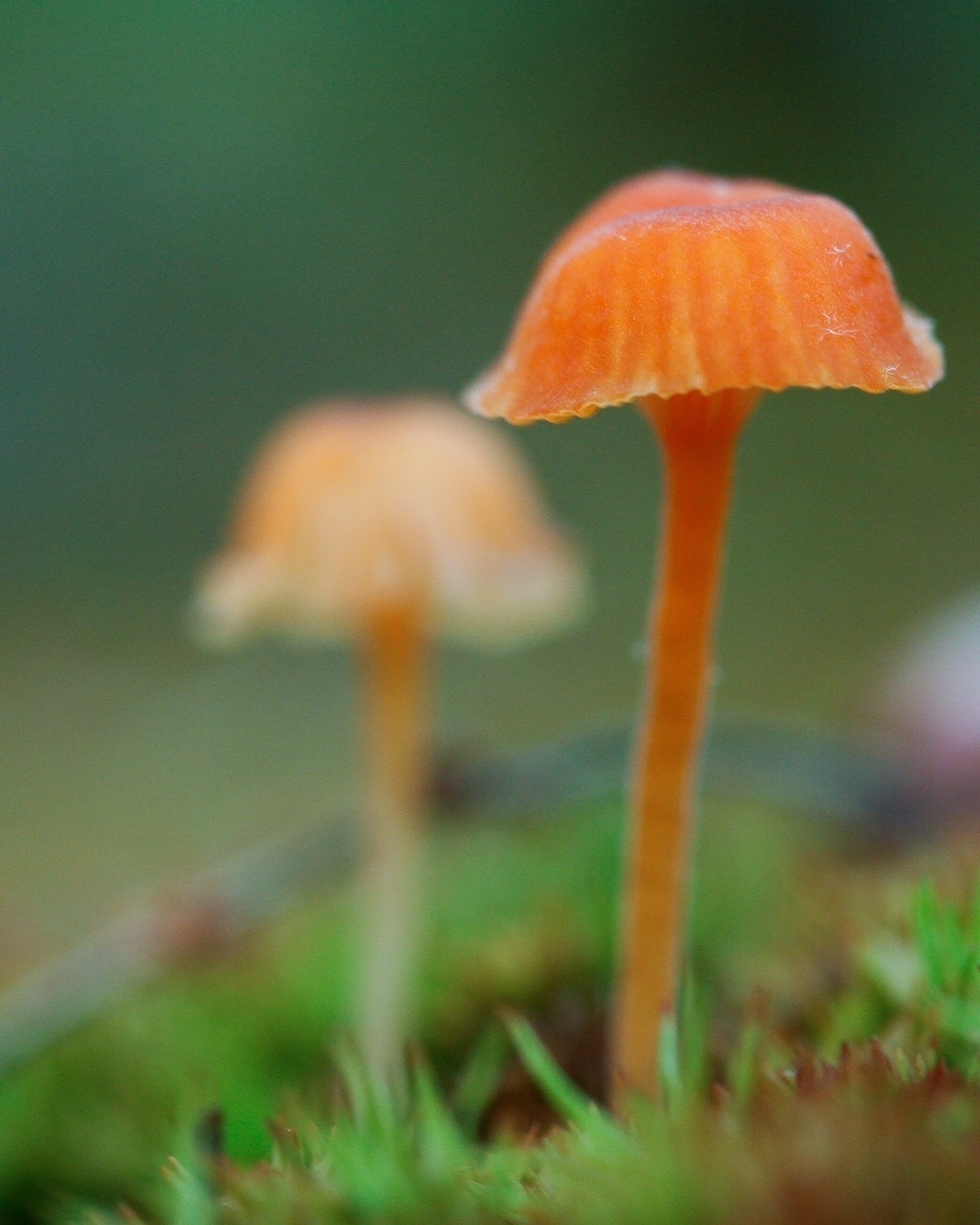 I’d suggest that we just start by acknowledging our own smallness. We spend much of our lives in a relentless effort to find or create our identity which is a part of proving our worth to the world around us. It might be that we do this with good deeds or, as often seems to be the case, with accumulation of one sort or another. It’s this latter bit that leads so many to a lifetime of bigger houses, faster cars, prettier clothing.
I’d suggest that we just start by acknowledging our own smallness. We spend much of our lives in a relentless effort to find or create our identity which is a part of proving our worth to the world around us. It might be that we do this with good deeds or, as often seems to be the case, with accumulation of one sort or another. It’s this latter bit that leads so many to a lifetime of bigger houses, faster cars, prettier clothing.
[caption id=“attachment_812” align=“aligncenter” width=“1300”]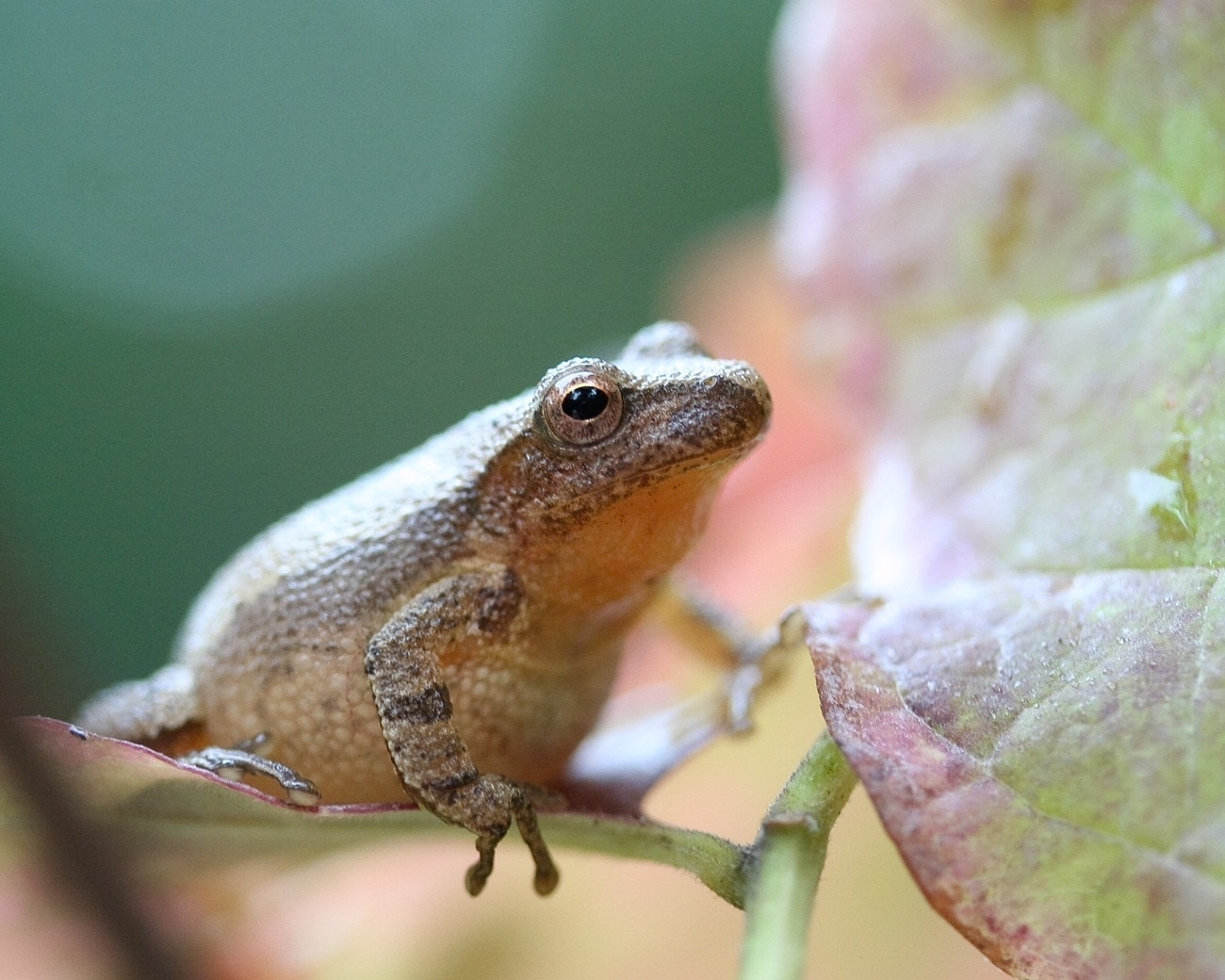 Spring Peeper[/caption]
Spring Peeper[/caption]
But really, we are, each of us just a tiny being sharing a tiny planet with 7 billion other tiny beings such as ourselves. And, of course, our tiny planet is just one of many billions in our galaxy which is itself just one of many billions in the known universe. To say that we are small is an understatement. And yet, our scale, both in physical size as well as in time, is what we experience day to day. It’s what we know and what we function in.
[caption id=“attachment_813” align=“aligncenter” width=“1300”] Earthrise[/caption]
Earthrise[/caption]
Our lives are small in so many ways. In the span of humanity we are but a tiny blip. Humanity itself is just a moment in the larger span of time. It’s easy to feel insignificant and in a strange way we many of us spend much of our lives trying to prove ourselves otherwise. Steve Jobs referred to it as “putting a dent in the universe.” The striving to leave a mark, to leave our mark. Sadly, in our striving to leave a mark, the collective mark we may leave is more a scar on the tiny planet we inhabit. Our mark might well be not just our own extinction but it is, as I write these words, the extinction of many other species.
 Another example of small is small as in intimate, which is to say, being aware of the simple things up close. When I take a walk in the woods I walk slowly. I’m happy to take a long hike for exercise but to truly explore I only need to venture out a few hundred feet outside my door. More often than not we miss the little detail going on all around us. It might be a cluster of tiny fungi growing in a carpet of moss. Or a snail moving across a rock. Those tiny things are easy to miss, especially for adults. We get busy with making life complicated and we tower so far above our toes that we rarely take the time or make the effort to see the world around us from a different perspective. Some of the most interesting stuff of life happens on this small scale.
Another example of small is small as in intimate, which is to say, being aware of the simple things up close. When I take a walk in the woods I walk slowly. I’m happy to take a long hike for exercise but to truly explore I only need to venture out a few hundred feet outside my door. More often than not we miss the little detail going on all around us. It might be a cluster of tiny fungi growing in a carpet of moss. Or a snail moving across a rock. Those tiny things are easy to miss, especially for adults. We get busy with making life complicated and we tower so far above our toes that we rarely take the time or make the effort to see the world around us from a different perspective. Some of the most interesting stuff of life happens on this small scale.
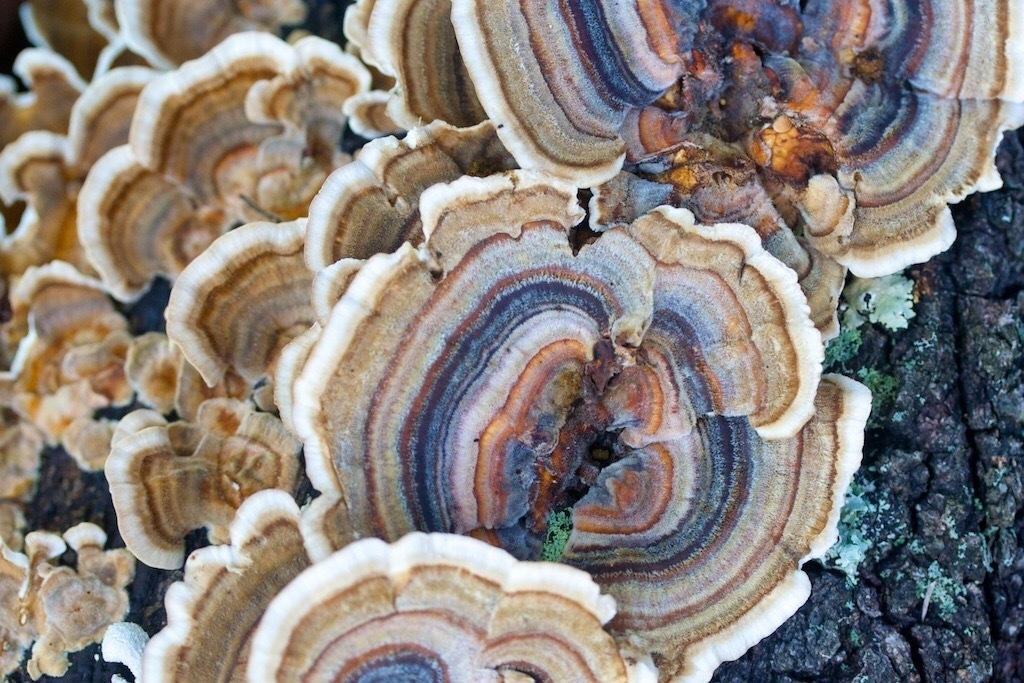 What begins as awareness can grow into appreciation and respect. It’s been my experience and observation that in the hustle and bustle of “modern” life we have disconnected from many important processes that are obvious if we’re paying attention but easily invisible if we’re not. Everything from soil building via decay to the hatching of turtle eggs to the transformation of a Monarch from larvae to butterfly. Life and death is happening all around us.
What begins as awareness can grow into appreciation and respect. It’s been my experience and observation that in the hustle and bustle of “modern” life we have disconnected from many important processes that are obvious if we’re paying attention but easily invisible if we’re not. Everything from soil building via decay to the hatching of turtle eggs to the transformation of a Monarch from larvae to butterfly. Life and death is happening all around us.
[caption id=“attachment_816” align=“aligncenter” width=“1300”]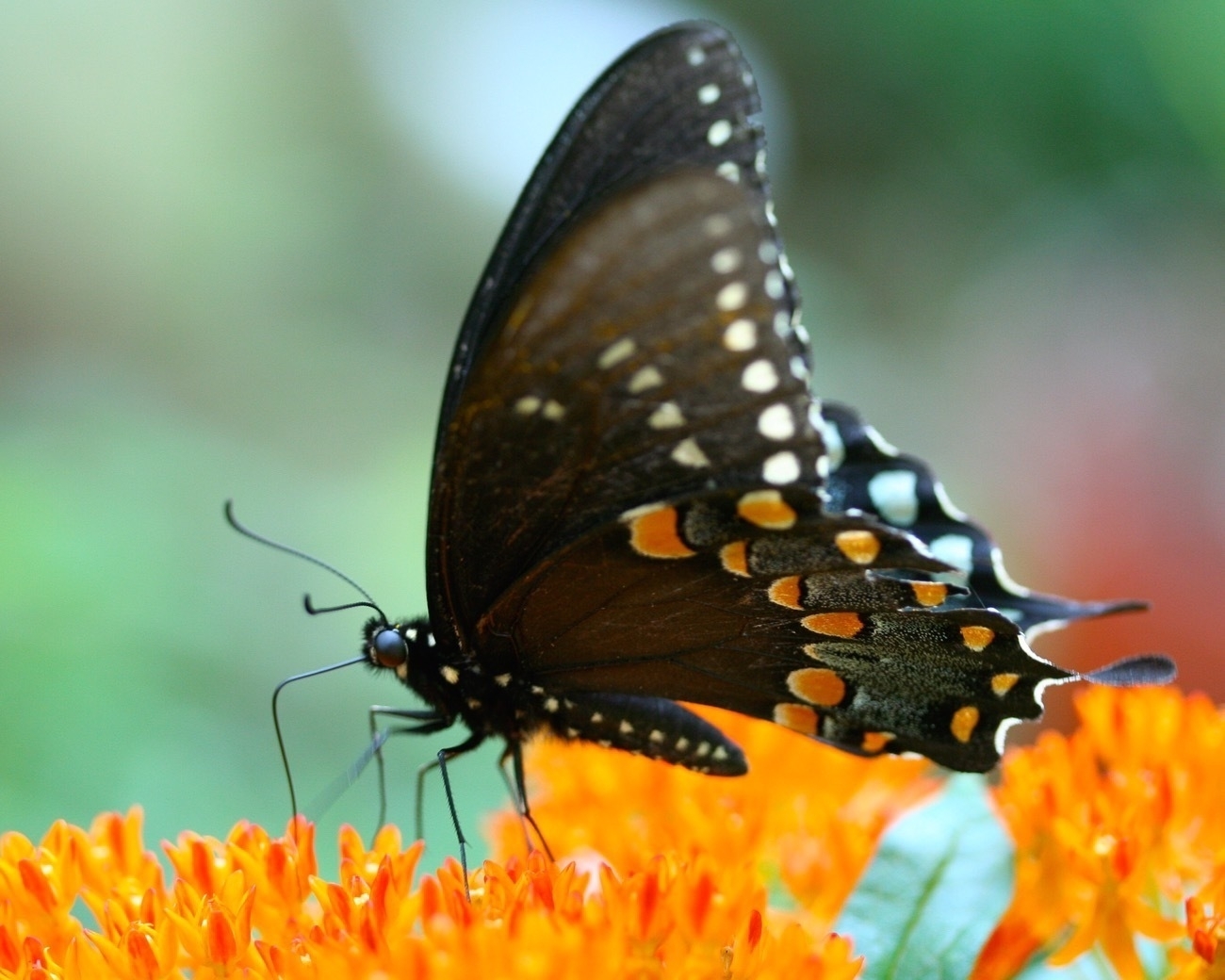 Spicebush Swallowtail nectaring from Butterfly Weed[/caption]
Spicebush Swallowtail nectaring from Butterfly Weed[/caption]
I’ll admit here the limits of these words. As much as I respect science and the scientific method I’m not a scientist and what I can offer here is personal perspective based on observation. Like many of the words shared throughout history, be it on paper or pixel, I am, in my own way, reaching out. Not so much to convince as to connect. Might I suggest we might do better embrace small? It is really just another way of suggesting that we embrace fragility. That we acknowledge that the life on our planet rests precariously on a tiny edge that we are collectively tipping out of balance.
So, how might this embrace manifest itself in how we live our lives? I’ve got a list! By no means exhaustive. Just a few of the things I try to implement in my life. Just something to get you started.
Of Monarchs and Birthdays
It’s Royal’s birthday so I’ll put on a happy face. But this. This. I’m having a real hard time imagining a summertime without Monarchs. What else will we kill off because we don’t know how to live within limits, don’t know how to live as species that recognizes the needs of other species. Every grass lawn, every golf course is a problem.
Prime example, I’ve just had a bit of a family kerfluffle because now that I’m not living at the lake they are making changes. Gone are the native wildflowers, including the butterfly milkweed I planted (the exact food source mentioned in this article), the coneflowers, etc…. replaced by? Grass. Every area we humans occupy (at least those of us I have come to know in my life) we insist upon wiping nature clean with a green lawn or concrete.
Of course I often hear “Oh what does this one little patch matter”? There’s more growing over there (wave hands in some direction). It is as though we each live in a bubble and unwilling to acknowledge that what we do matters because millions (in this nation) of others are doing it as well. The denial of collective behavior and collective effect is very intentional.
So, today Monarchs. Tomorrow?
Pondering the Future
Specifically my personal future and also thinking a bit about this blog. I’ve obviously not been very consistent with updates. Honestly, I put some of the blame for that on Facebook. I’m sure I am not the only one who spends too much time there. While it is great for sharing I thing the downside is that much of that sharing is just reposting. I am also leery of so much content being under one roof so to speak.
So, still here. With the crazy heat and drought of this past summer my garden suffered as did the many trees and bushes I put in over the past four years. That said, almost all of my perennials survived even if they didn’t thrive. Luckily the veggie garden was, by chance, smaller. The climate future looks increasingly scary for those of us that want to eat food, wink wink.
As for my project here, it will continue for the time being though I struggle to remain enthusiastic with the annual veggies. Something about three months of intense drought and heat seems to make my garden time outside a bit less enjoyable. Our well is shallow which means I either need to haul water from the lake or invest several thousand into a new well. Climate change is ugly.
So, I’m thinking that it is time to add in a new element of activity which reflects a new interest (actually a childhood/life interest that has been sitting in a corner of my mind): astronomy! Well, science in general, but astronomy especially. While I have no intention of abandoning the permaculture work I think having another primary activity is a good thing and in the winter when growing is out I’ll have something very interesting to explore, namely, our universe.
Which brings me back to one my thoughts on the blog. I’ve not been consistent in writing about my permaculture/homestead efforts but do think I might be more consistent in reporting on my astronomical explorations as it is the sort of interest that lends itself to data collection and reporting. Should I do that here as a supplement to my other interests or do I start an astronomy based blog? Actually, I think I just sorted it out as I write. I’ll keep it here but will not just add in my astronomical observations but will also add in other science related material.
Actually, and don’t laugh, but I have this vision of humanity (or myself?) that connects to a few episodes/films from Star Trek that have always stuck with me. In particular, those which seem to showcase small, egalitarian villages in which science seems to not only co-exist with daily life, but informs a deeper and greater understanding of the relationship between humans and nature and the larger universe. Contrast this to our modern manifestation which seems to have largely become a tool for corporate profit with little regard to ethics. A great example would be GMOs and modern industrial agriculture as it might compare to a decentralized permaculture-based system informed by local and thoughtful observation.
One outlook, the modern corporate/capitalist/industrial, uses science primarily as a tool for the accumulation of wealth. The other uses science as a method for deepening our understanding of the natural world around us not just for technological development, but for the sake of understanding. In this second outlook the ethics of use would be an important part of the overall process and would include all sorts of new questions and concerns in any sort of possible application of scientific knowledge. In fact, one might say that the second view represents a kind of democratization of applied science.
Wow. I didn’t expect to take this post in this direction but it is interesting and it is something I’ve thought about off and on over the years so, yeah, I’ll be back to this at some point. Another area that I’d like to explore is science literacy and critical thought. There has been a long trend in the U.S. which seems to be gaining a bit of steam when, in fact, it should be losing steam and that is the movement against science. Such a movement can only happen when there is a lack of communication of knowledge. When people are ignorant of established scientific knowledge and the basic method which serves as its foundation there is room for manipulation.
So, you can expect that I’ll be spending some time discussing not just science but specifically science literacy. I’m not a trained scientist but I think I know enough to discuss some issues as a citizen. Specifically I’m likely to dig into the entwined relationship of politics, religion and global capitalism have been used to undermine science literacy to further their capacity as control agents: social, political, economic, ecological… everything from the genetics of corn to humans, from crowd control to the “entertainment” that comes out of the glowing screens in living rooms. Science and technology can be used in many ways for many different and often opposing agendas. I think that will be some interesting exploration.
There is also some real life stuff I’m hoping to make happen that reflects all of this, specifically a few ideas for how I might further science literacy here in rural Missouri where it is greatly needed. I’ll share that as well.